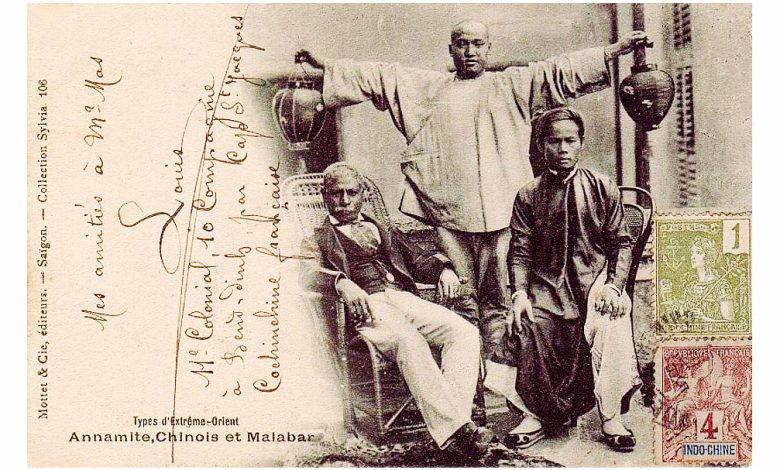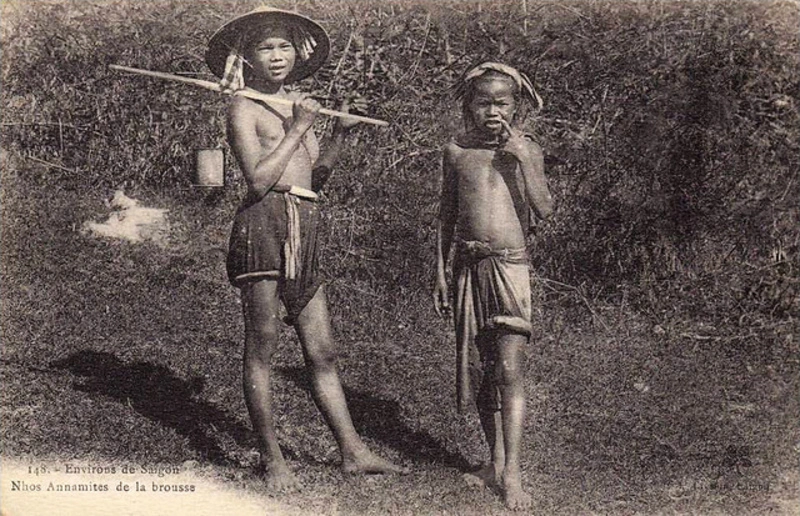Vietnamese Names During the French Colonial Period: Tonkin, Annam, Cochinchina in Vietnamme

An Nam và Cochinchina: Nguồn gốc tên gọi và ảnh hưởng lịch sử
Nguồn gốc tên gọi “An Nam”

Tên gọi "An Nam" là thuật ngữ quen thuộc mà Trung Quốc đã sử dụng để chỉ Việt Nam trong nhiều giai đoạn lịch sử, mặc cho quốc hiệu thực tế của đất nước có thay đổi. Có nguồn gốc từ thời nhà Đường, "An Nam đô hộ phủ" được thành lập tại miền Bắc Việt Nam, từ đó "An Nam" trở thành một cách gọi phổ biến mà người Trung Quốc dành cho nước Việt Nam.
Trong suốt các thời kỳ từ nhà Đinh, Tiền Lê đến Lý, Trần và nhiều triều đại sau, mặc dù quốc hiệu liên tục thay đổi (Đại Cồ Việt, Đại Việt, Đại Ngu…), "An Nam" vẫn là tên gọi được sử dụng trong nhiều ghi chép và bản đồ của Trung Quốc.
Từ góc nhìn của các nhà nghiên cứu phương Tây, "Annam" thường dùng để chỉ tổng thể lãnh thổ Việt Nam. Chẳng hạn, nhà truyền giáo Alexandre de Rhodes, người có công lớn trong việc phát triển chữ Quốc ngữ, đã áp dụng từ "Annam" trong các tài liệu của mình. Ông chia lãnh thổ thành hai vùng: “Tunquin” (Đàng Ngoài) và “Cochinchine” (Đàng Trong).
Tên gọi “Cochinchina” và sự thay đổi ý nghĩa
Tên gọi “Cochinchina” bắt nguồn từ các nhà buôn Bồ Đào Nha trong thời kỳ thăm dò vùng Đông Nam Á. Cái tên này xuất hiện khi người Bồ Đào Nha nghe đến “Cauchy” (Giao Chỉ), một tên gọi cổ của Việt Nam. Tuy nhiên, do "Cauchy" trùng với một địa danh ở Ấn Độ, họ đã thêm “china” (Trung Quốc) vào, dẫn đến cái tên “Cochinchina”, nghĩa là “vùng Giao Chỉ gần Trung Quốc”.
Khi người phương Tây tiếp xúc với Việt Nam trong thời kỳ Trịnh-Nguyễn phân tranh, “Cochinchina” tiếp tục được dùng để chỉ vùng Đàng Trong, nơi các chúa Nguyễn quản lý, trong khi đó vùng Đàng Ngoài của chúa Trịnh được gọi là “Tonkin”, lấy từ tên thủ đô Đông Kinh (Hà Nội ngày nay).
Tìm hiểu thêm: Nguồn gốc tên gọi một số trái cây
Vào thế kỷ 19, khi thực dân Pháp xâm lược Việt Nam, họ đã điều chỉnh nghĩa của “Cochinchina”. Từ một thuật ngữ chỉ khu vực Đàng Trong, nó trở thành tên gọi riêng biệt dành cho vùng Nam Kỳ (Nam Bộ). Pháp đã chia Việt Nam thành ba vùng:
- Cochinchina (Nam Bộ)
- Tonkin (Bắc Bộ)
- Annam (Trung Bộ)
Dù vậy, người Pháp vẫn gọi người dân Việt Nam ở cả ba kỳ là “Annamite” (người An Nam), phản ánh sự coi thường đáng kể đến sự đa dạng văn hóa và lịch sử của người Việt.
Đọc thêm: Xứ Nẫu – Tại sao có tên gọi thế?

Sự khác biệt văn hóa qua tên gọi
Việc phân chia thành ba kỳ không chỉ tạo ra sự khác biệt về hành chính mà còn dẫn đến sự biến đổi trong văn hóa mỗi vùng. Nam Bộ (Cochinchina), nhờ vị trí giao thương thuận lợi và sự tiếp thu nhiều luồng văn hóa, đã nhanh chóng trở thành một trung tâm giao thoa văn hóa. Ngược lại, Bắc Bộ (Tonkin) vẫn giữ gìn truyền thống lâu đời của mình, trong khi Trung Bộ (Annam) đóng vai trò trung gian về cả địa lý lẫn văn hóa.
Tên gọi “Cochinchina” hiện nay không còn được chính thức sử dụng, nhưng vẫn ghi dấu trong các nghiên cứu lịch sử và bản đồ cổ.
Tham khảo thêm: Cửu Long – Có phải là 9 rồng?
Kết luận
Từ "An Nam" đến "Cochinchina," mỗi tên gọi đều phản ánh một giai đoạn lịch sử đặc biệt cũng như cách mà các thế lực bên ngoài nhìn nhận Việt Nam. Những thuật ngữ này không chỉ đơn thuần là địa danh; chúng còn biểu hiện các mối quan hệ phức tạp về chính trị, văn hóa và quyền lực. Hiểu được ý nghĩa của chúng giúp chúng ta nhận thức rõ hơn về lịch sử dân tộc và tôn vinh bản sắc Việt Nam đã được gìn giữ trải qua nhiều thế kỷ.
Nguồn Bài Viết Tên gọi Việt Nam thời kì thuộc Pháp: Tonkin, Annam, Cochinchina



